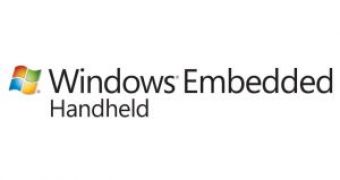Microsoft has announced two new Windows operating system releases planned for delivery this year and the next, both essentially flavors of the same platform. The plain vanilla version of Windows Embedded Handheld will be launched in the second half of 2010, while its successor, Windows Embedded Handheld 7, will drop one year later, in the second half of 2011. The two upcoming Windows releases have the new Windows Embedded Handheld platform at the core, announced by the Redmond company on June 17th, 2010.
At this point in time, original equipment manufacturers building ruggedized mobile PCs and devices are tapping the software giant for either Windows Embedded CE or Windows Mobile platforms to power their products. Analyst firm VDC Research reveals that Windows Embedded CE and Windows Mobile account for over 87% of the OS market for handheld devices, some 2.3 million of which were produced in 2009, but with the number forecasted to reach 4.3 million in 2014.
Recently, Microsoft has announced that two separate teams of its Windows Embedded business were folded into the same group. In this regard, Windows Embedded Business, dealing with Windows Embedded CE, is now responsible for both handheld terminals and ruggedized devices, while Mobile Communications Business (MCB), managing Windows Mobile, remains committed to mobile phones. Moving forward, WEB will be responsible for the evolution of not only Windows CE, now referred to as Windows Embedded Compact, but also that of Windows Embedded Handheld.
The move is designed to make it simpler for OEMs to build handheld devices, as they will no longer have to weigh in Windows Embedded CE (Windows Embedded Compact) and Windows Mobile and choose between the two, when they will have the option of a dedicated OS. “Our Windows Embedded Business is focused on extending Windows and the benefits of cloud computing to the world of specialized devices,” Steve Ballmer, Microsoft chief executive officer, noted.
Microsoft revealed that the first version of Windows Embedded Handheld would be offered by the end of 2010 and would be based on Windows Mobile 6.5, which, in turn, has Windows CE at the core. An important aspect that needs to be underlined is the fact that Windows Embedded comes with support for the same developer tools that are currently being leveraged to create applications today, such as Visual Studio 2008 and Windows Forms.
In 2011, Microsoft will upgrade the Windows Embedded Handheld platform using Windows 7 technologies, building the future version of the operating system on Windows Embedded Compact 7. Planned for availability in the second half of the coming year, Windows Embedded Handheld 7 will bring to the table rich user interfaces and for natural input, touch, gestures, etc. The promise from Microsoft is that developers will be able to take advantage of a clear migration path for apps, and leverage technologies such as Silverlight, Microsoft XNA, and Visual Studio 2010.
32-bit (x86) Windows Embedded Standard 7 RTM, 64-bit (x64) Windows Embedded Standard 7 RTM and the Windows Embedded Standard 7 Evaluation toolkit are available for download here.

 14 DAY TRIAL //
14 DAY TRIAL //